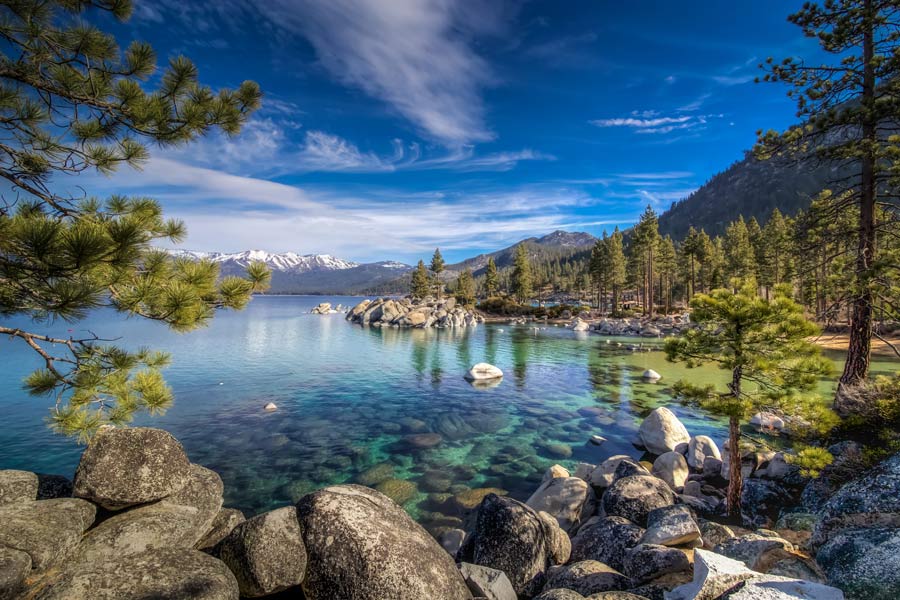Not everyone buys triple bottom line concept: Idea aims to balance community, environment and economy

ALL |
In the last year, Tahoe’s planning agency has touted the “triple bottom line” as a concept that could bring prosperity, community livelihood and protection of natural resources in a win for all at Tahoe.
The triple bottom line, originally an accounting concept used by businesses looking to become more sustainable, is the idea that decision makers must balance the economy, environment and community.
“Lake Tahoe needs a new model; the polarity model from the past has not achieved all of our goals for the community or environment,” said Julie Regan, spokeswoman for the Tahoe Regional Planning Agency. “This is a model of sustainability. It forces us to be better problem solvers, to find solutions that will work for all three.”
Business leaders like Carl Ribaudo say it’s a terrific idea and a great change from the past where the environment was pitted against development.
Environmental leaders – while acknowledging it sounds great – are cautious to accept it hook, line and sinker. They say the lake remains the ultimate bottom line.
“Since the compact was established, we’ve lost over 30 feet of clarity,” said John Friedrich with the League to Save Lake Tahoe. “Obviously the current rules have not been strong enough or enforced enough. Weakening protections so we can have a tradeoff with other bottom lines is not the solution.”
The TRPA’s bi-state compact was ratified by legislatures in both states, the Congress and the president in 1969. The agency is in the process of devising its next 20-year regional plan, through a process called Pathway 2007. For more information and to participate, visit http://www.Pathway2007.org.
Regan says the compact clearly acknowledges the connectedness of the community, economy and environment.
The first item of the compact says: “The waters of Lake Tahoe and other resources of the region are threatened with deterioration or degeneration, which endangers the natural beauty and economic productivity of the region.”
Ribaudo, Friedrich and Regan agree on one point at least: the past is not a good model.
“You can’t look back on the last 25 years and agree we’ve done a good job,” Ribaudo said.
But he says the economy is the one that’s taken the back seat.
“The lake, the community and economy: nobody’s done a good job. To keep what we’ve been doing is nonsense. We haven’t focused enough on the economy and recognized its impact on the social fabric of this community.”
Friedrich and Michael Donahoe with the Tahoe Area Sierra Club say there will be instances where a tough choice must be made, and one of the three bottom lines will need to give.
“In the long term, I think we can all agree that the environment concern trumps the other two,” Donahoe said. “The compact is very clear: The environment trumps everything else.”
He seems the most skeptical, which could be a byproduct of his career as a business management consultant.
“The triple bottom line was an attempt to get corporations to understand their responsibility to their communities and environment,” Donahoe said. “But when push came to shove, when times were bad, the true bottom line was always the economic, and the other two were put on hold for a while.”
He said Tahoe can achieve the triple bottom line.
“But if push comes to shove, we go with the environment,” Donahoe said.
Friedrich said the health of the lake should be the ultimate focus.
“For any project, whether it be the airport, shorezone, or Heavenly’s master plan, each of them should be looked at to determine: are we getting a measureable environmental benefit for this project,” he said.
TRPA executive director John Singlaub remains optimistic and practical. For instance, the new regional plan could loosen rules on coverage.
“Many property owners don’t improve their properties because of the disincentives under our current rules, resulting in blighted areas throughout our communities.” Singlaub wrote in a February opinion piece. “We’re working toward solutions that continue to protect our fragile environment while giving property owners more flexibility to make improvements.”

Support Local Journalism

Support Local Journalism
Readers around the Lake Tahoe Basin and beyond make the Tahoe Tribune's work possible. Your financial contribution supports our efforts to deliver quality, locally relevant journalism.
Now more than ever, your support is critical to help us keep our community informed about the evolving coronavirus pandemic and the impact it is having locally. Every contribution, however large or small, will make a difference.
Your donation will help us continue to cover COVID-19 and our other vital local news.










